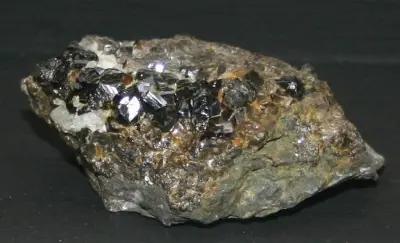Cassitrite trade in Oman - Exporting Cassitrite to Oman
- Anbar Asia
- Trade with Oman
- Oman's Minerals market
- Cassitrite trade in Oman
- Oman
 ProfileTravertine
ProfileTravertine - Oman
 ProfileDiamond, Meteorite
ProfileDiamond, Meteorite - Oman
 ProfileIndustrial Crops
ProfileIndustrial Crops - Oman
 ProfileRuby
ProfileRuby - Oman
 ProfilePearl
ProfilePearl - Oman
 ProfileMeteorite
ProfileMeteorite - Oman
 ProfileCoal
ProfileCoal - Oman
 ProfileGroceries, Spices, Herbal Distillate, Bread And Pastry
ProfileGroceries, Spices, Herbal Distillate, Bread And Pastry - Oman
 ProfileMeteorite
ProfileMeteorite - Oman
 ProfileAgate
ProfileAgate - Oman
 ProfileAmber
ProfileAmber - Oman

 ProfileAgate
ProfileAgate - Oman
 ProfileCarpet
ProfileCarpet - Oman
 ProfileMeteorite
ProfileMeteorite - Oman
 ProfileTea And Coffee, Spices, Industrial Crops
ProfileTea And Coffee, Spices, Industrial Crops - Oman
 ProfileMeteorite
ProfileMeteorite - Oman
 ProfileFertilizers And Pesticides
ProfileFertilizers And Pesticides - Oman
 ProfileDairy
ProfileDairy - Oman
 ProfileGroceries, Snacks, Carpet
ProfileGroceries, Snacks, Carpet - Oman
 ProfileRuby
ProfileRuby - Oman
 ProfileHerbal Distillate, Livestock, Animal Feed, Industrial Crops
ProfileHerbal Distillate, Livestock, Animal Feed, Industrial Crops - Oman
 ProfileDetergent
ProfileDetergent - Oman
 ProfileMeteorite
ProfileMeteorite - Oman
 ProfileTurquoise, Ruby, Agate, Diamond, Amber, Topaz, Emerald, Jade, Pearl, Meteorite, Tanzanite
ProfileTurquoise, Ruby, Agate, Diamond, Amber, Topaz, Emerald, Jade, Pearl, Meteorite, Tanzanite - Oman
 ProfileAgate
ProfileAgate - Oman
 ProfileMeteorite
ProfileMeteorite  أنس6 months agoOman
أنس6 months agoOman ProfileMeteorite
ProfileMeteorite- Oman
 ProfileGroceries, Canned Foods, Pickles
ProfileGroceries, Canned Foods, Pickles - Oman
 ProfileCoal
ProfileCoal  علي7 months agoOman
علي7 months agoOman ProfileParaffin
ProfileParaffin



 Sara2 weeks ago
Sara2 weeks ago ProfileTravertine
ProfileTravertine سالم علي4 weeks ago
سالم علي4 weeks ago ProfileDiamond, Meteorite
ProfileDiamond, Meteorite Sunland united projects1 months ago
Sunland united projects1 months ago ProfileIndustrial Crops
ProfileIndustrial Crops Akhtar miraal1 months ago
Akhtar miraal1 months ago ProfileRuby
ProfileRuby ward2 months ago
ward2 months ago ProfilePearl
ProfilePearl ايهاب علي2 months ago
ايهاب علي2 months ago ProfileMeteorite
ProfileMeteorite عرج سواحل2 months ago
عرج سواحل2 months ago ProfileCoal
ProfileCoal kika holding trading2 months ago
kika holding trading2 months ago ProfileGroceries, Spices, Herbal Distillate, Bread And Pastry
ProfileGroceries, Spices, Herbal Distillate, Bread And Pastry عبدالمتعال أحمد عبدالمتعال3 months ago
عبدالمتعال أحمد عبدالمتعال3 months ago ProfileMeteorite
ProfileMeteorite منصور3 months ago
منصور3 months ago ProfileAgate
ProfileAgate سالم3 months ago
سالم3 months ago ProfileAmber
ProfileAmber خالد بن أحمد الوضاحي3 months ago
خالد بن أحمد الوضاحي3 months ago
 ProfileAgate
ProfileAgate melika t4 months ago
melika t4 months ago ProfileCarpet
ProfileCarpet Zakariya4 months ago
Zakariya4 months ago ProfileMeteorite
ProfileMeteorite كركدية4 months ago
كركدية4 months ago ProfileTea And Coffee, Spices, Industrial Crops
ProfileTea And Coffee, Spices, Industrial Crops سالم5 months ago
سالم5 months ago ProfileMeteorite
ProfileMeteorite فرهاد و صدیقه للتجارة ش م م5 months ago
فرهاد و صدیقه للتجارة ش م م5 months ago ProfileFertilizers And Pesticides
ProfileFertilizers And Pesticides الأساس الراقي5 months ago
الأساس الراقي5 months ago ProfileDairy
ProfileDairy احمد بزله5 months ago
احمد بزله5 months ago ProfileGroceries, Snacks, Carpet
ProfileGroceries, Snacks, Carpet منذر5 months ago
منذر5 months ago ProfileRuby
ProfileRuby الوطنية للتنمية والتطوير للزراعة اعلاف مستدامة5 months ago
الوطنية للتنمية والتطوير للزراعة اعلاف مستدامة5 months ago ProfileHerbal Distillate, Livestock, Animal Feed, Industrial Crops
ProfileHerbal Distillate, Livestock, Animal Feed, Industrial Crops Fady6 months ago
Fady6 months ago ProfileDetergent
ProfileDetergent مؤمن ابراهيم6 months ago
مؤمن ابراهيم6 months ago ProfileMeteorite
ProfileMeteorite احجار كريمة مسقطية6 months ago
احجار كريمة مسقطية6 months ago ProfileTurquoise, Ruby, Agate, Diamond, Amber, Topaz, Emerald, Jade, Pearl, Meteorite, Tanzanite
ProfileTurquoise, Ruby, Agate, Diamond, Amber, Topaz, Emerald, Jade, Pearl, Meteorite, Tanzanite عبدالعزيز العلوي6 months ago
عبدالعزيز العلوي6 months ago ProfileAgate
ProfileAgate عبدالعزيز البرامي6 months ago
عبدالعزيز البرامي6 months ago ProfileMeteorite
ProfileMeteorite أنس6 months ago
أنس6 months ago ProfileMeteorite
ProfileMeteorite east star eight6 months ago
east star eight6 months ago ProfileGroceries, Canned Foods, Pickles
ProfileGroceries, Canned Foods, Pickles أبو حاتم الرواحي7 months ago
أبو حاتم الرواحي7 months ago ProfileCoal
ProfileCoal علي7 months ago
علي7 months ago ProfileParaffin
ProfileParaffin






















